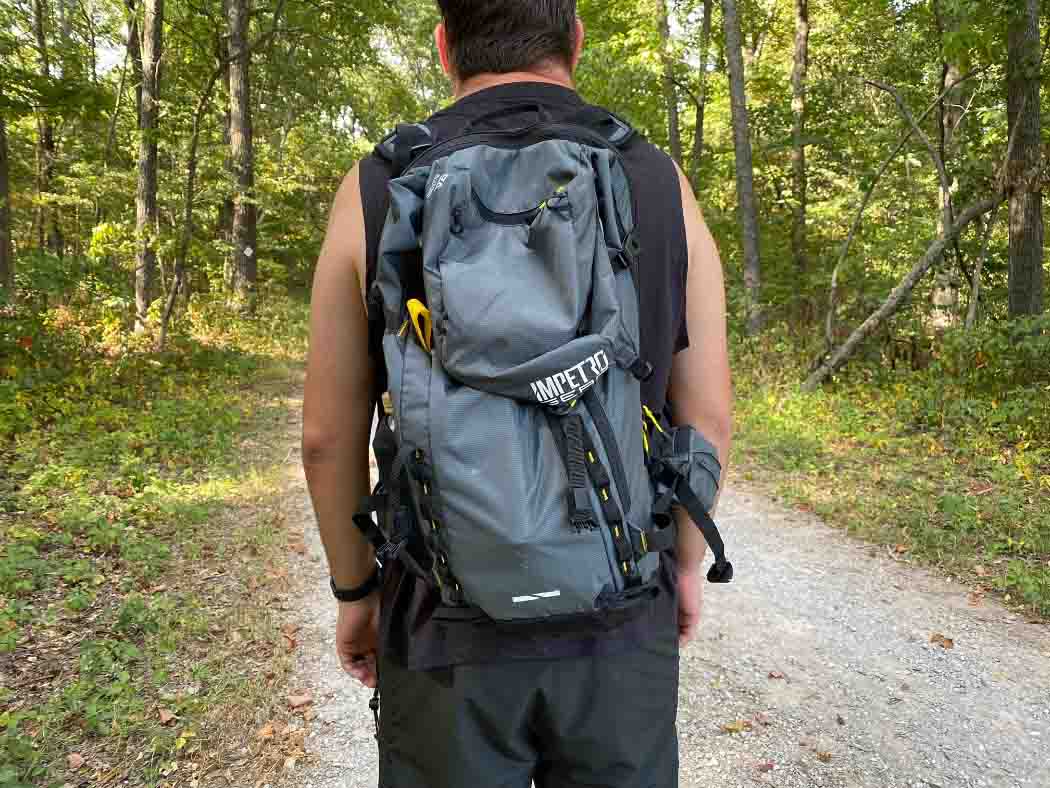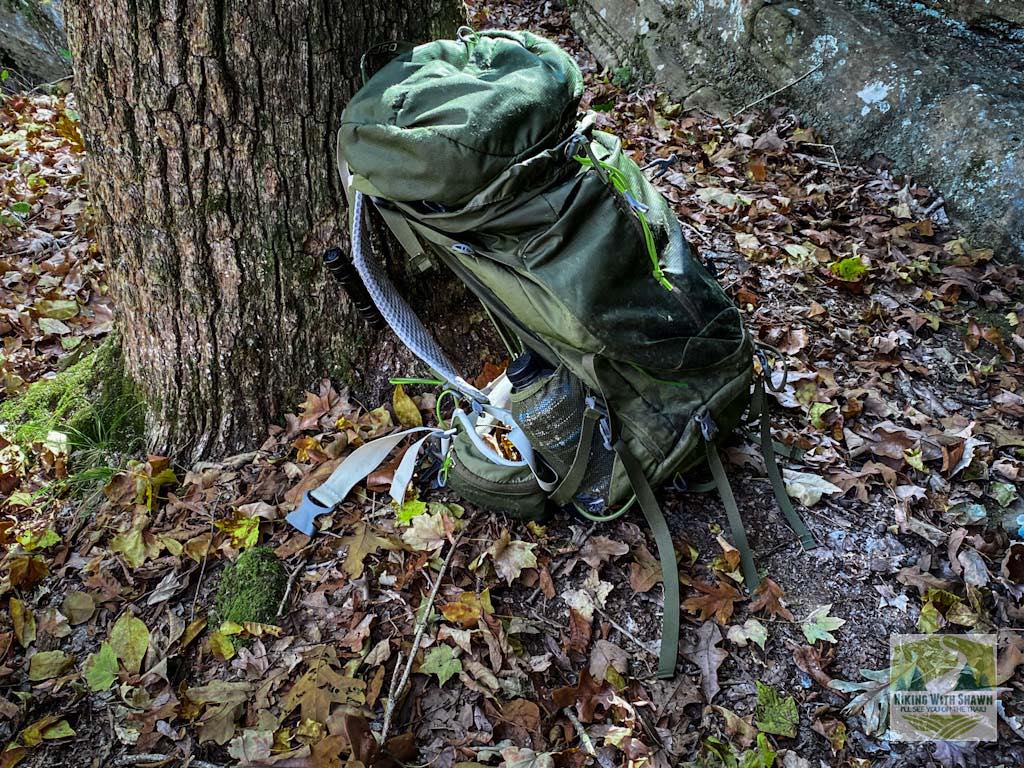How to Choose the Best Hiking Daypack
Are you looking for the best hiking daypack possible?
It’s essential to find a suitable daypack for several reasons. You want to be comfortable on your hike. You want to be free of pain. You especially want convenience while out on the trail.
This guide will help you select the ideal hiking daypack that suits your outdoor lifestyle.
It’s important to find a daypack that fits your outdoor lifestyle. It will either make or break your hiking trip. Let’s ensure it makes the trip by reading the rest of this guide.
What is a Hiking Daypack?
A hiking daypack is a backpack specifically designed for hikers undertaking shorter daylight-hour hiking trips.
There is a difference between hiking daypacks and regular backpacks. For example, a school backpack is made for short distances and not all-day comfort, while a hiking backpack is designed for all-day comfort on rugged trail conditions and terrain.
Many beginner hikers make the mistake of using regular backpacks, which nearly always result in damage to the pack, pain to the hiker, and complete discomfort. And that makes sense because a school backpack wasn’t made for outdoor adventures.
Most hiking daypacks are measured in liters. The majority of them will be 15 to 35 liters. The liter amount indicates how much stuff the backpack can hold.
Most daypacks are used for day hikes, one-night overnight backpacking trips, or by people traveling.
Key Factors to Consider When Choosing the Best Hiking Daypack
Consider the following factors when selecting the ideal hiking daypack for your unique outdoor adventure lifestyle.
Capacity
The capacity of the daypack is important, and remember, it’s typically measured in liters.
A smaller hiking daypack will typically range from 15 to 20 liters. This is often used for very short day hikes. You’ll put minimal gear in your pack – pretty much just food, water, and maybe a first aid kit.
A medium hiking backpack typically ranges from 21 to 30 liters. This is a standard daypack used for most day hiking trips. You can get most of your 10 essentials of hiking in a pack of this size.
A larger daypack typically has a capacity of around 31 to 35 liters. You’ll use this for longer day hikes or even one-night overnight backpacking trips. You’ll have space for extra gear, which is often handy during the winter hiking season for carrying extra layers.
What kind of hiking do you usually do? Do you hope to hike more miles at some point? Questions like these will help you decide on what size daypack to get.
Fit and Comfort
It’s essential that your backpack fits you comfortably; otherwise, hiking will be a miserable experience.
Any daypack you choose should have adjustable shoulder straps, a hip belt, and sternum straps. These features will help you adjust the pack to fit on your body in a way that keeps you from being fatigued and injured while out on the trail.
It’s important to get fitted for your backpack. Some packs are made for certain body types and heights. Ensure you are measured and choose the right size that fits your specifications.
Many hiking daypacks offer features such as padding and ventilation. Padding helps to keep the pack comfortable on your body. Ventilation helps to wick moisture and keep you dryer while wearing the pack.
If your hiking daypack isn’t comfortable, it’ll ruin your hiking experience almost every time.
Weight
Weight is a big factor for many people within the hiking and backpacking community.
There is a big difference between ultralight and almost any other hiking backpack. Ultralight packs are very small and feature lightweight materials. Regular backpacks are usually made with heavier fabrics and weigh more.
Many people want to have as little weight as possible for extra comfort. You may choose an ultralight backpack because of this need. However, there are several disadvantages to choosing them, as you sacrifice many features to save weight.
Frame Type
There are two types of frames to consider when choosing the best hiking daypack.
The first type is frameless. This is a lighter-weight backpack. It offers more flexibility.
The internal frame (some older models have external frames) is added to the pack. This gives you more structure and support. It also tends to have better ventilation.
If you can try each one and see which offers more comfort, then you should do that.
Hydration Compatibility
Hydration is often a crucial factor when selecting a suitable daypack for hiking.
Many packs offer water bladder sleeves. These are pockets where you can put 1 to 3-liter water bladders into the pack, providing more access to drinking water. Remember that the weight of the water is factored into the overall liters.
Most daypacks also offer extra pockets on the sides of the pack for water bottles. Most of the pockets are large enough to carry small to extra-large bottles as well.
Material and Durability
You’ll want to take note of the material used and its durability, especially if you have any allergies to certain materials.
The most common fabrics used in daypacks are nylon, polyester, and ripstop. The fabrics are meant to help keep the pack lightweight while still being able to handle rugged conditions. It’s important for your pack to be able to last, right?
Look at whether the pack is waterproof or water-resistant. There is a difference between the two. Waterproof typically means that no water will get into the pack, while water-resistant means that the pack can get water inside, but features are integrated to help resist it and dry it quickly.
Pockets and Organization
Pockets and organizational features will be tailored to your specific needs and comfort levels.
Most packs usually have a main compartment pocket, which is the largest pocket that holds most of your belongings.
If your daypack includes a hip belt, many of them will also have smaller pockets on each side of the hip belt.
There may be an external mesh pocket on the back of the pack, as well as on the sides, for drinking bottle holders.
Many daypacks have extra pockets on top and hidden pockets within the pack that you can use for added security.
More pockets often mean fewer ultralight features. It’s really up to you how many pockets you’ll need. More pockets do make organization more convenient, though.
Special Features
Some of the best hiking daypacks will offer many extra special features to make the backpack even better.
Some will have trekking poles and ice pick attachments.
Many packs come with built-in rain covers or shells to help keep your pack dry. You may also need to purchase these items separately.
Many daypacks feature adjustable straps that can be tightened very tightly. We call these compression straps. They help you secure your gear more effectively and prevent your pack from shifting too much.
Many packs come with load lifters. This helps you lift the backpack to prevent it from putting too much pressure on parts of your body that are experiencing discomfort from the pack, such as your back and shoulders.
Many daypacks also offer a built-in whistle on the sternum straps, which is nice for when you need one in an emergency situation.
Best Hiking Daypack for Different Types of Hikers
There are many different types of hiking daypacks available. The one you want to get really depends on what kind of hiker you are.
If you’re a beginner, consider a fully featured small to medium-sized daypack. You want gear space, adjustment features, and an internal frame. This is likely to be your best option as you continue to improve at hiking.
If you are more experienced and you want to lose weight, consider an ultralight backpack. You’ll have to audit your gear and decide what is critical and what can be left out. However, weight is a significant factor for some people.
You’ll likely want a larger pack if you plan to do a lot of winter hiking. You’ll need that extra space for extra layers. That larger daypack might also keep you warmer in the process.
If you plan to travel and hike, they typically make specially designed hiking backpacks for this type of situation.
It’s important to do your research based on what kind of hiker you are so that you can choose wisely.
Common Mistakes to Avoid When Buying a Daypack
There are a few common mistakes that you’ll want to try to avoid when choosing the best hiking daypack for you.
Size really does matter. If you choose something too small, you won’t be able to carry all your gear. However, if it’s too big, it will be a lot heavier than necessary. You also want to ensure that you choose the right size for your height, as it could result in significant discomfort.
You don’t want to ignore fit and comfort features, either. These features are designed to help you enjoy your hike without pain and discomfort from your pack. I’ve seen many beginner hikers quit because they chose the wrong pack.
Don’t skip out on waterproof or water-resistant protective features. If you can find a pack that will stay dry or comes with a rain shell, then you should consider it. A wet pack can ruin your gear, make the pack less durable, and result in a stinky smell.
Consider weight distribution. You want to ensure you get the right pack based on the number of liters and how you can pack items into it. An unbalanced weight distribution can significantly hinder your hiking adventures.
Be sure you ask around for advice from other hikers you know to avoid more mistakes they may have made.
How to Test a Daypack Before You Buy
Try to test a hiking daypack before you buy it.
To do this, visit an REI and your local hiking gear store. Try the pack on inside. Add some items to it to give it some weight and walk around to see how it fits.
Be sure to adjust the straps to ensure they fit you properly and conform to your body type and height.
Ensure the pack isn’t uncomfortable on your pressure points, including your shoulders, back, and hips.
You might want to let the store know what you’re doing, as they may be able to help ensure it fits properly.
Best Hiking Daypack Maintenance Tips
Whatever you choose as your best hiking daypack, be sure to take care of it so that it will last a lot longer.
You need to clean it out after every use. Hang it up to dry if it gets wet. Clean out any debris from the pockets and on the outside of the pack.
Store your daypack in a cool, dry place to keep it in the best possible condition.
Consider reapplying water repellent if necessary. You should also apply permethrin to it to help mitigate ticks and other biting insects from getting to you from the pack.
Repair any damage you find or send it to the manufacturer if they offer a repair warranty.
Final Thoughts About Hiking Daypacks
I didn’t mention brands in this guide. I would rather you find the best hiking daypack based on the factors I’ve listed above. However, I use Osprey Packs as my daypacks and love them a lot.
Consider trying out different daypacks if you’re able to in order to find the best one for you.
If you’ve enjoyed reading this article, please consider supporting me by leaving a small one-time donation or by becoming a Monthly Supporter on my Patreon Page.
I would also like to invite you to subscribe to my free monthly newsletter, which offers more hiking tips, resources, reviews, and upcoming local events. I also have a free discussion forum dedicated to hiking and backpacking chat, available worldwide.
And until next time, I’ll see you on the trail.

Shawn Gossman
Founder, Hiking with Shawn
Howdy folks! My name is Shawn Gossman and I founded Hiking with Shawn. I’m an avid hiker, cyclist and outdoorsman here in the Shawnee National Forest. I was born and raised in Southern Illinois and never want to leave. Click here to learn more about Shawn Gossman





